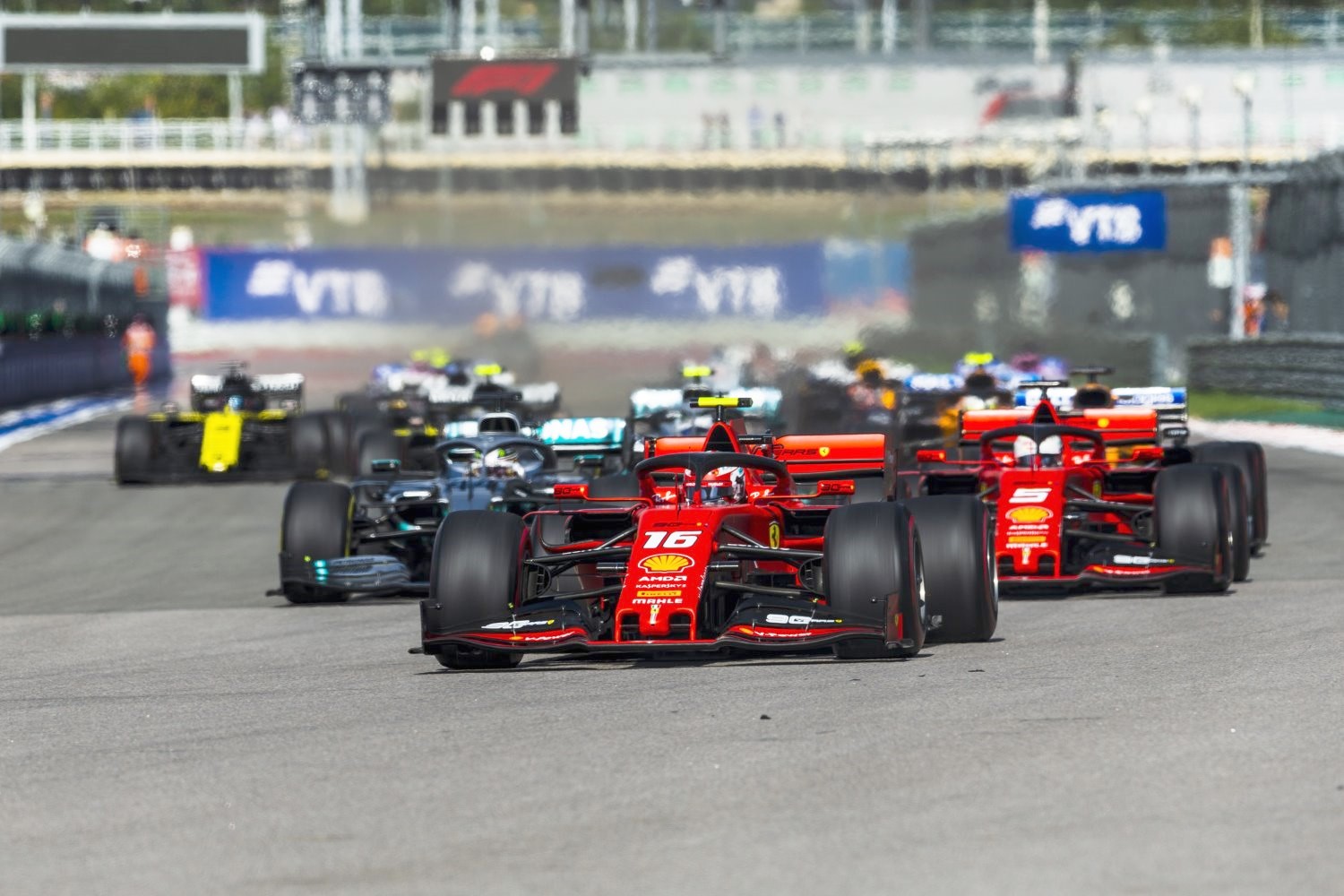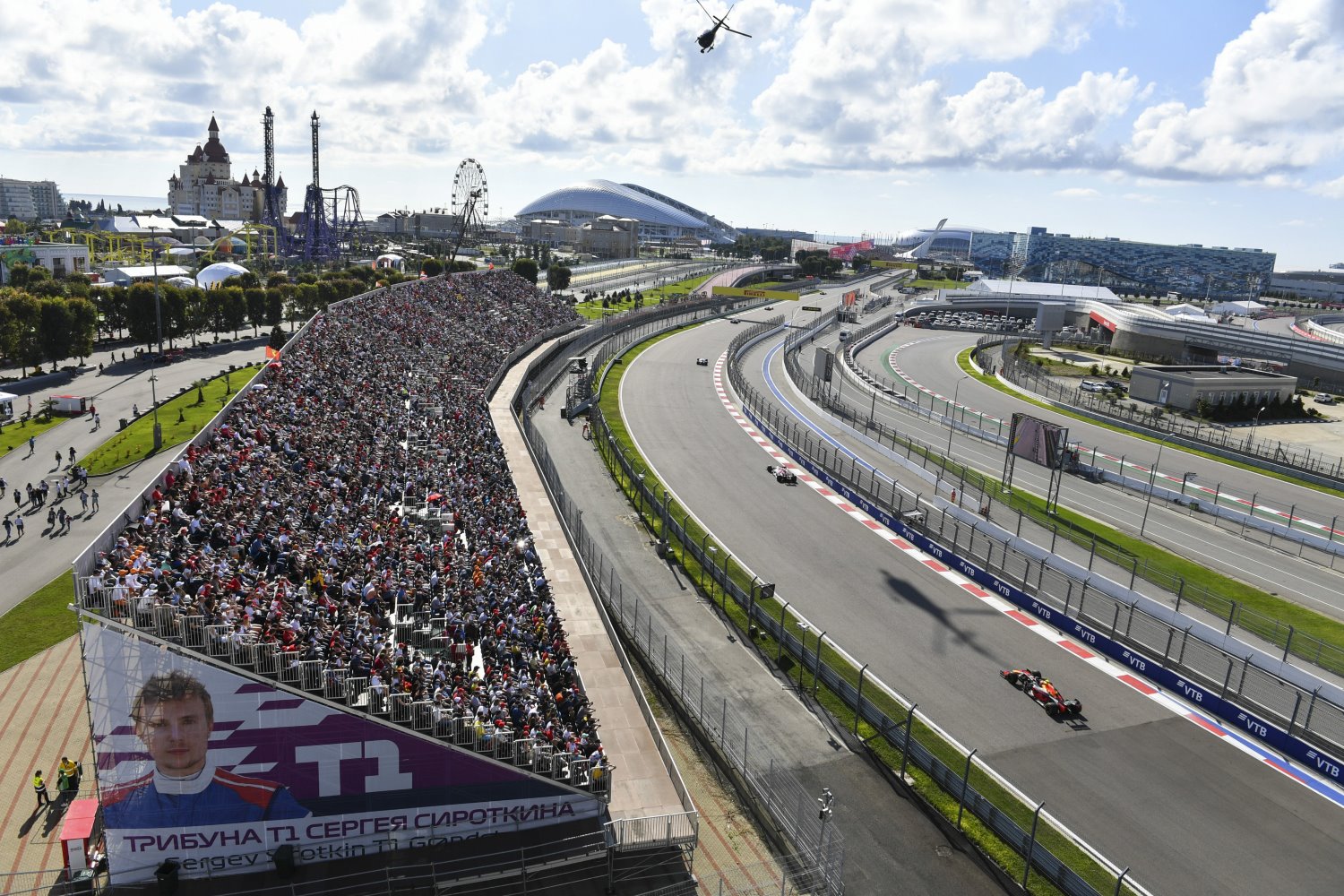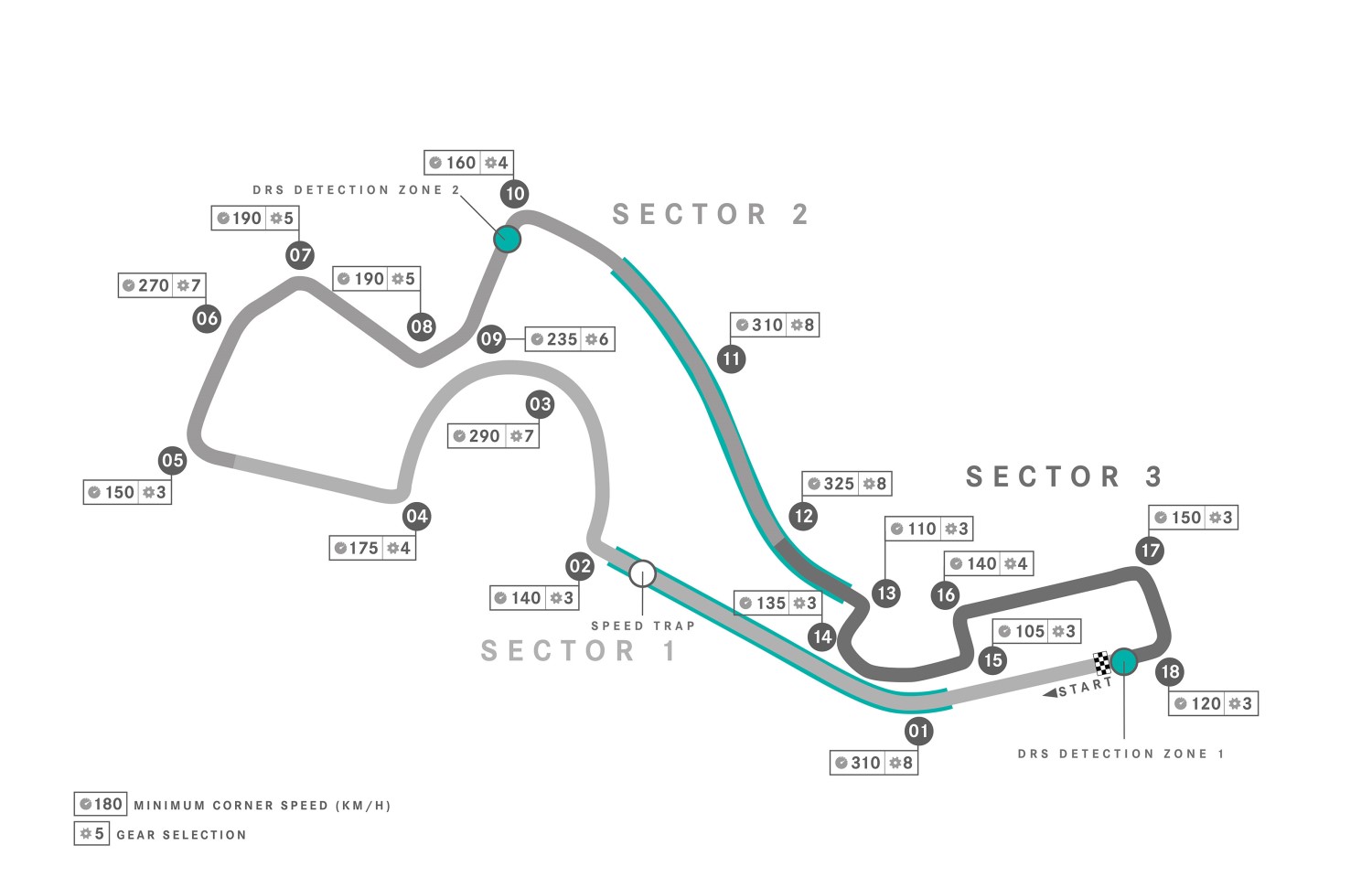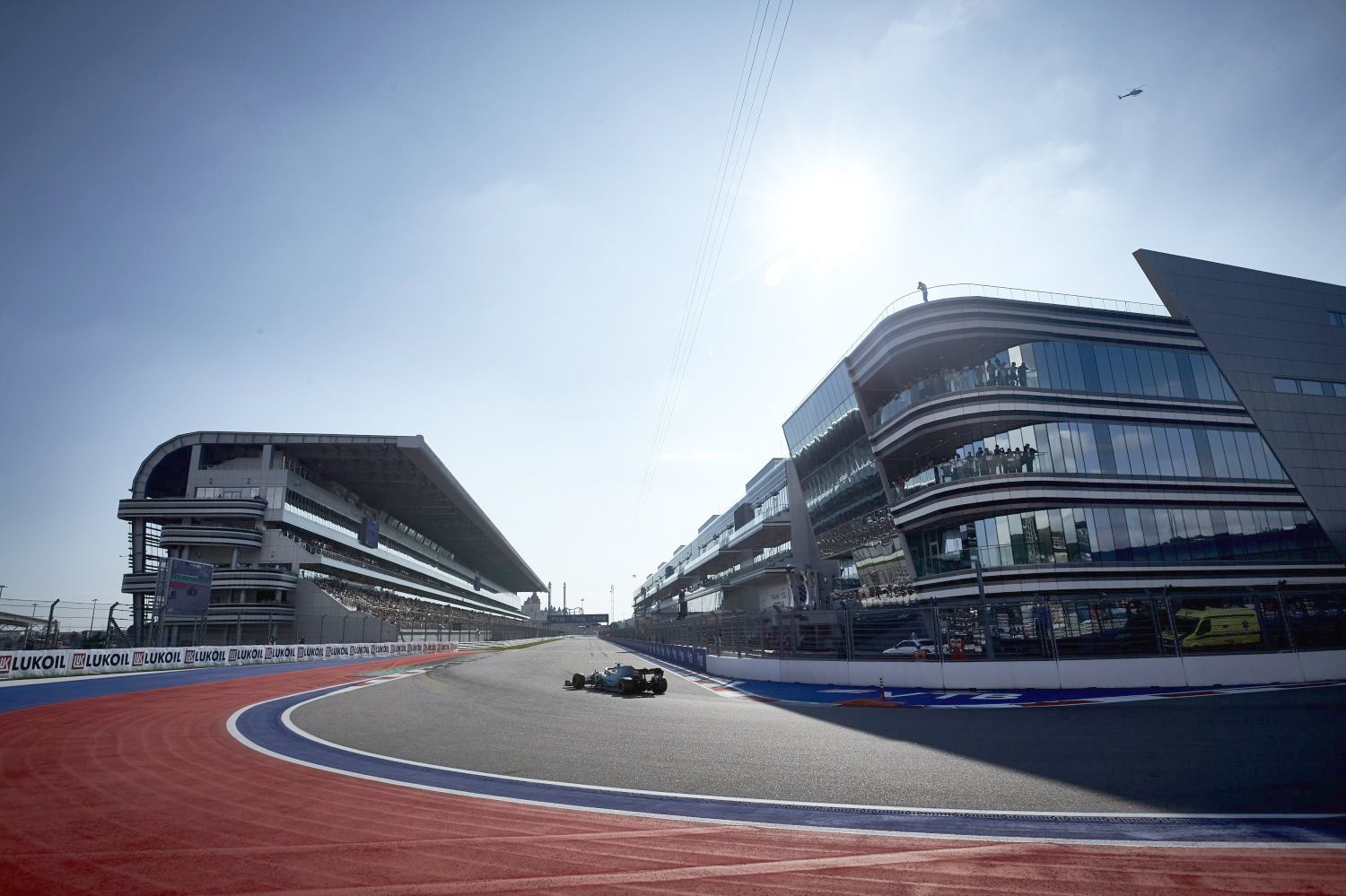F1 Russian GP Preview
After a trio of triple-headers Formula One has waved a brief farewell to Western Europe and will head to the Caucasian Riviera for the Russian Grand Prix, Round 10 of the 2020 FIA Formula One World Championship.
Grand Prix racing in Russia first took place in the 1910’s in St. Petersburg but it was to be another century before Formula One ventured to the country, when the roads around the stadia used for the 2014 Winter Olympics were converted into a race track to create the Sochi Autodrom.
The smooth 5.8km circuit is the third-longest on the current calendar, behind Spa-Francorchamps and Silverstone, and its infrequent use means there is a high track evolution across the course of the weekend. Long full-throttle sections and 90-degree corners feature prominently while the circuit’s iconic section is the long-radius off-camber turn four which bends 180-degrees around the flag-lined Medals Plaza and takes eight seconds to negotiate from entry to exit.
Located on the iridescent Black Sea, Sochi is a popular beach destination and has been a fixture on the Formula One calendar since 2014. The Sochi Autodrom forms part of the legacy of the 2014 Winter Olympics, with the street circuit layout emerging from the internal roads that led to the Olympic Park.

Connection to the Olympics
While motorsport was never a discipline in the Olympic Games, it is arguable that Formula One drivers share many traits with Olympians: both groups see performance as an ultimate goal; both devote every waking moment to achieving higher standards of competition; both live and train in preparation for the ultimate test, be it a race, a match or a contest, in order to win the coveted prize. And just like the Games are a hugely inspiring event, a Formula One Grand Prix is also the kind of sporting pursuit that inspires awe in those watching the action.
The Sochi Autodrom is not, of course, the first venue to host Formula One and have a close connection to the Olympic Games. The Circuit de Catalunya was used as one of the venues for road cycling in the 1992 Barcelona Games, while the Autodromo Hermanos Rodriguez in Mexico City and the Circuit Gilles Villeneuve both are built in locations used for Olympic events in the past (in 1968 and 1976, respectively). Rio de Janeiro (Jacarepaguá) and Los Angeles (with several events in Long Beach in the 1984 Games) also share membership of this small club.

Still, as one of the most recent additions to the calendar (before the calendar madness of this unusual 2020 season, at least), the track in Sochi throws prominent reminders of our sport’s Games connection at every corner – literally so. The track snakes around some of the venues of the 2014 Winter Olympics, taking in the sights, among others, of the Bolshoy Ice Dome, the Iceberg and the Fisht Stadium, which hosted the opening and closing ceremonies of the Games and later became one of the venues of the 2018 FIFA World Cup. Together with the giant Olympic rings welcoming teams and fans alike at the train station, there’s no doubting the recent history of the place – assuming drivers can focus on any of the buildings when zooming past them in their cars.
A lap of Sochi, one of the longest tracks on the calendar, features a good number of 90-degree corners, typical of these semi-street circuits, but also two long straights-that-aren’t-quite-so. The most memorable corner of all, however, remains turn three/four, an extended semicircle around the old medal plaza, lined with the flags of all participating countries in the 2014 Games, a corner that evokes comparisons with turn eight in Istanbul and was the location of a few famous shunts (think Grosjean in 2015 and Vettel in 2016) and some epic overtakes (such as Charles Leclerc’s on Magnussen in 2018).

Five Things to Look Out for in Sochi
- After the triple-header of speed, Russia is a different prospect. Gone are the high lateral demands of cornering and in comes what is effectively a street circuit. While it looks low-speed, Sochi features predominantly medium-speed corners – usually in the 120-140km/h speed range. Being mainly 90-degree corners, you spend plenty of time on corner entry and require good traction on exit.
- The long sweeping Turn 3 left-hander looks dramatic, but it’s taken flat in Qualifying trim and doesn’t tend to challenge the driver or car dramatically. After experiencing little in the way of stress up until this point, Turn 3 puts a lot of demand on the front-right tire and requires careful management.
- The DRS effect is one of the most powerful on the 2020 calendar, with a benefit of 0.6 seconds per lap in Qualifying with DRS engaged. But it’s also not a simple drag race, with the activation point on exit of the final corner making it essential the driver follows the car ahead closely and gets good traction on in order to get the chance to activate DRS in the race.
- The C5 compound will appear for the first time in 2020 at Sochi, and it will also feature at the season-ending Abu Dhabi Grand Prix. In contrast, Mugello featured the C1 due to the high demands on the tires.
- We’ve seen plenty of drama in the past on the opening laps at Turn 2, and this is influenced by the fact drivers approach with tires and brakes not up to optimum temperature, because Turn 1 is effectively a kink rather than a proper corner.
Fact File: Russian Grand Prix
- The Sochi Autodrom’s run from pole position to the first braking zone (Turn 2) is the longest of any F1 track, with a distance of around 890 meters.
- Because of the long run down to Turn 2, the tow is the most powerful of the F1 season – especially on the first lap of the race, which makes maintaining position at the front very difficult.
- The Russian Grand Prix’s 309.944 km race distance is the longest of any race this season, closely followed by Mugello (309.497 km).
- Sochi is the only F1 track on the 2020 calendar with a 60km/h speed limit in the pit lane, rather than the usual 80 km/h limit.
- This track features one of the highest time losses on the calendar for a pit stop. Overall, it takes 30 seconds from entering the pitlane to joining the track after the stop. When compared to running at normal racing speeds on track, the time loss for slowing down at the pit entry, running through the pits, fitting fresh tires and accelerating back out of the pit lane is roughly 25 seconds.
- The track layout winds around the venues of the 2014 Winter Olympics, including the Olympic Stadium, Bolshoy Ice Dome, Medal Plaza and Adler Arena.
- The Sochi Autodrom is one of three Olympic venues to have hosted F1 races, alongside the Circuit Gilles Villeneuve (1976) and Circuit de Barcelona-Catalunya (1992).
- Mercedes has a 100% win record at not only the modern-era Russian Grand Prix, winning every race at Sochi since it arrived on the F1 scene in 2014, but also the two Russian Grands Prix held in 1913 and 1914 in St. Petersburg, which were both won by Benz cars.
- The smooth tarmac at the Sochi Autodrom is very gentle on the tires, with some drivers in the past pitting on lap one and making it to the checkered flag on the same set.
- 62 gear changes per lap are expected in Sochi, which makes it the track with the joint-highest number of gear changes of any track on the 2020 F1 schedule alongside the Nürburgring.
- There are a lot of 90-degree corners at the Sochi Autodrom which feature a similar trajectory. This usually makes setting up the car more straightforward compared to other tracks.
- Russia and Abu Dhabi are the only two races this season where the three softest tire compounds will be used (C3, C4 and C5).
- Turn 3 is one of the longest corners in F1. It’s taken flat-out, apart from when tire management is required, because pushing hard through this corner lap after lap is tough on the rubber – particularly with the three softest compounds being run in Sochi.
- Marbles (pieces of rubber that come off the tire as they are worn down) are a common problem at Turn 3, as they tend to build up offline very quickly during sessions and races. We’ve seen them catch drivers out in the past, when they stray ever so slightly off the racing line.
- Fuel consumption proves to be particularly high at the Sochi Autodrom because there are several long straights, and the frequency of short, 90-degree corners means drivers apply full-throttle much earlier than at a track with many hairpins and chicanes. If it’s a clean and uninterrupted race, more fuel management is required through lift and coasting than at many other tracks. But the Safety Car has appeared in four of the last five races in Russia, with this pause in the race meaning the driver can reach the checkered flag with less management.
- The frequency of Safety Cars in Russia is due to the street circuit nature of the Sochi Autodrom. The close proximity of the barriers make it more difficult to recover a broken down or damaged car, particularly if an incident happens around Turns 13 at the end of the back straight as the corner has a blind entry.
- Netflix will be embedded in the Mercedes team for the Russian Grand Prix, capturing content over the race weekend for the next series of Drive to Survive.
